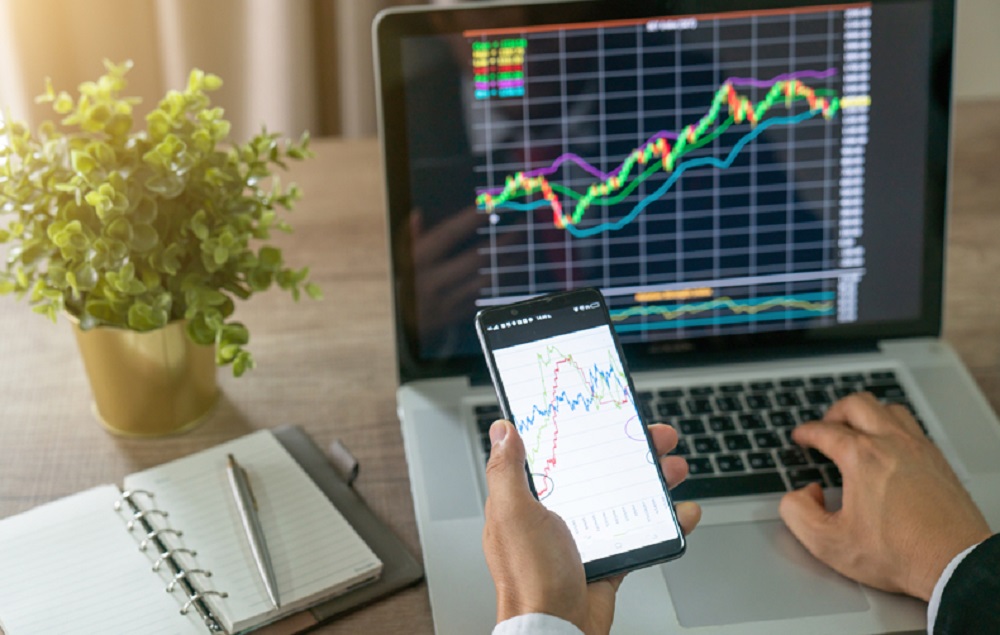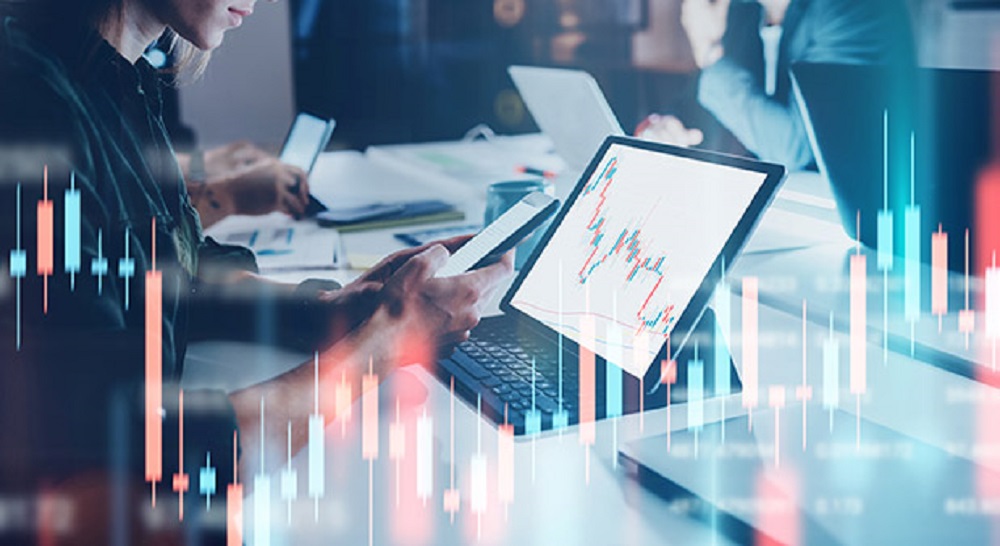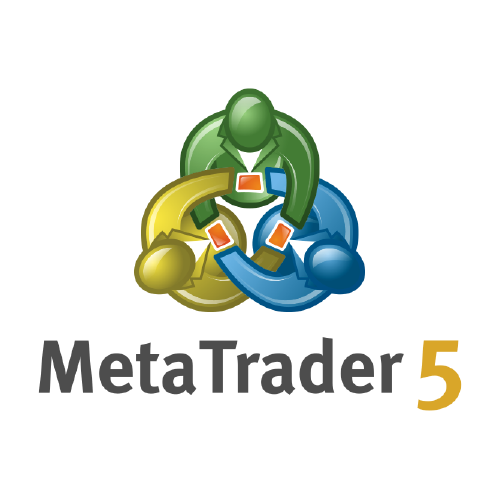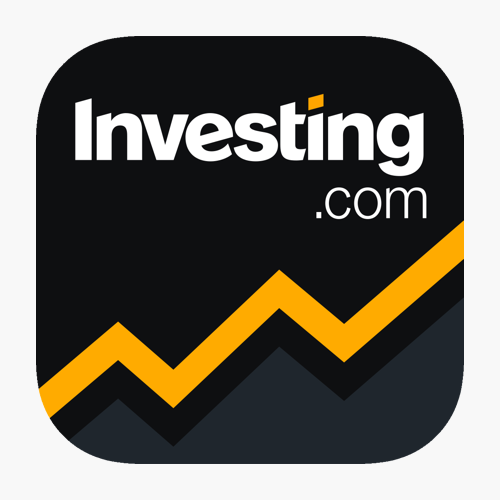
The Best Ways to Learn More About Forex Trading
The 10 Steps You Need to Take to Learn About Forex Trading
- 1. Read up on the Basics
- 2. Read Trading Forums
- 3. Sign up for a Free Trading Account and Practice
- 4. Sign up for a Course or Webinar
- 5. Research Brokers
- 6. Open a Real Account and Start Trading on a Strict Budget
- 7. Sign up for Forex Signals
- 8. Create Trading Rules That You Will Not Break
- 9. Research Different Trading Strategies
- 10. Find a Forex Mentor
- Final Thoughts
Learning as much as you can about the forex market and the trading methods used is vital to your future success as a forex trader.
Solid background knowledge will help you to carefully manage your risk and exploit the opportunities for increased profit. It can be tempting to launch into forex trading to try and make money as soon as possible, but preparation is key.
Whilst fluke or luck may yield results in the short term, it is risky to trade large (or even small) volumes of money in a market you do not fully understand.
Taking the time to build a comprehensive theoretical and practical grasp of forex trading will ensure you have a higher chance of securing profits over the long term.
Key topics to cover in your learning include:
- How the forex market operates
- How to set yourself up to make trades
- How to know when to place and end a trade
- The key trading times in different regions
- How to put in place an all-important risk management strategy
Whilst research is valuable, it is sensible to also gain practical experience of trading before making higher-stake trades. A balance between theory and practical knowledge will ensure you are in the best possible position to begin your trading career.
There are multiple online platforms and approaches from which to gather this initial trading information and experience. Due to the wealth of information, it is most effective to learn about the forex market step-by-step.
This article will give you a run-through of ten helpful steps to take to learn more and increase your chances of being successful in forex trading.
The Best Trading Platforms
Let’s take a look at the best trading to earn more.
1. Liteforex
Best for: Learning from others
Liteforex is one of the most popular online reliable brokers over the world. Over the past 15 years, it has developed a strong reputation for beginners and experienced investors alike, has a minimum $100 deposit.
The Liteforex app aims to use easy for every clients. It is available on Google Play and the App Store and allows you to move seamlessly between devices.
It’s innovative features include:
- Pre-programmed one-click trading
- Copy Trader – Copy the trades of others in real-time
- Its own social networking platform
- Pre provided investment strategies which they call Copy Portfolios
The app boasts the ability to allow you to place online trades even if the trading platform is down.
The information is being presented without consideration of the investment objectives, risk tolerance, or financial circumstances of any specific investor and might not be suitable for all investors.
2. FXTM
The FXTM Platform itself is intuitive and easy to use, suitable for those just getting into trading and those more experienced alike.
It is designed to offer a full replication of an institutional trading environment including depth of market.
With advanced risk management and order functionality, this is a detailed platform for trading stocks.
The FXTM app offers a premium range of order types, with advanced technical analysis tools.
You can set up push and email notifications for the important things that you want to know in relation to your stock trading needs – such as price alerts and trade statistics.
Within the app, you can:
- Complete a range of order types
- Work with all your accounts in one app
- Understand detailed trade analysis
- Review detailed order tickets – base currency dollar value and pip distance
As a platform, there are comprehensive educational videos and explanations of symbols, so you can find optimized processing for expert advisors and indicators.
The information is being presented without consideration of the investment objectives, risk tolerance, or financial circumstances of any specific investor and might not be suitable for all investors.
3. FBS
Best for: CFDs
This app is designed for those wanting to trade outside of the US. It is considered one of the best for CFDs on shares and has a minimum $100 deposit.
There are low trading fees but considerable fees for inactive users.
The educational section is average, as are the research tools. However, the app is easy to use overall.
This app is recommended for those familiar with CFDs and who are actively trading. Reviews of the app show that users like the:
- Account-opening process
- Deposit and withdrawal features
- Customer service
- Actual trading platform
The information is being presented without consideration of the investment objectives, risk tolerance, or financial circumstances of any specific investor and might not be suitable for all investors.
The 10 Steps You Need to Take to Learn About Forex Trading
Read up on the Basics
As the currency market is incredibly volatile, forex trading can be risky for investors. To be successful in making your trades in the forex market, it is important to read up on the basics.
Online articles, finance and trading websites, books and videos are all good places to start learning in an accessible way.
It is useful to begin by learning about the currencies you intend to trade in.
Choosing currency pairs and analyzing their movements will help you to become accustomed to certain trends in the market, for example, being able to judge when fluctuation is temporary so you do not exit a trade too soon. This type of analysis will come with practice and it is productive become used to the rhythms of the currencies.
It is also important to increase and maintain your consumption of economic news. Keeping up to date with economic and political developments in your countries of choice will help you to stay informed of potential impacts on the forex market.
Traders should also seek to have a good knowledge of the technical elements involved in trading such as:
- Understanding spreads and transaction costs
- Choosing timeframes
- Learning how to read forex charts
- Basic and advanced trading strategies, such as scalping, part-time trading, carry trading, hedging and margin trading
- Automated trading and signals
Learning how to use leverage safely is also a good time investment. Trading with leverage has the potential to vastly increase the profits to be made from currency movements (but it can also amplify losses). Learning how to set up and use leverage is important on an operational level, whilst being aware of the risks of leverage is crucial to retaining the capital to trade long term.
Reading up on risk management and setting a risk management strategy before beginning to trade is vital. Often, trading success relies on the ability to remain objective when executing a trade as emotions can cloud judgment and lead to unnecessary risks and losses. Look carefully into different risk management strategies, such as setting up stop-loss orders, to safeguard your capital.
Successful traders keep their risk (and therefore their leverage) as low as possible.
Read Trading Forums
There are many trading forums online and these can be great places to glean tips and advice about forex trading. These forums are online communities for traders, where members can ask questions and glean insight from the conversations of others.
Forums will have directories with links to different threads, making it easier to find the specific information that may be useful to you. There is no need to be an active member of a forum, they are just as useful for observing and learning from others’ comments and experiences.
One of the most popular forums for forex trading is Forex Factory. It has a good reputation amongst traders and gives good analysis, news updates and market data.
This site has different sub-forums and features different threads on its forum homepage, organized according to time and popularity.
Baby Pips is another popular forum, particularly with beginners. This forum is aimed at amateur traders, providing an aesthetic and easy to use interface. Its logical organization into categories and question topics makes it very accessible.
Forums provide the opportunity to learn from the mistakes and successes of others. If you have a question regarding forex trading, it is likely that someone has already answered it on a trading forum.
There are many forex forums full of trader insights out there, so have a browse and find one that is useful for your trading level and approach.
Sign up for a Free Trading Account and Practice
Reading widely and doing your research before beginning your foray into forex trading is important to ensure you are starting from a knowledgeable base, but it is no substitute for real experience of trading in the market.
Opening a forex demo account and practicing making demo trades will help you to gain experience of the process and mechanisms involved in making a trade. It will also allow you to gain experience of employing different forex trading methodologies to decide when to place your trades.
The most common forex trading platforms are MetaTrader4 (MT4) and MetaTrader5 (MT5) but, whichever trading platform you choose, there will be information on it available for free online.
Testing out different strategies without the risk of using a live forex account enables you to make initial mistakes in a safe environment. As a guide, it is recommended to place at least 50 demo trades to learn the platform and its crucial features before placing real trades. It is suggested that this should have a time frame of around a month.
With your free trading account, you should become accustomed to:
- Using the platform’s interface
- Changing its settings
- Viewing currency pair charts
- Opening forex orders
- Buying & selling
You will find that, as you trade, you will learn from your successes and mistakes, gaining invaluable experience of deciding when risk is likely to reap rewards and when it is time to close the trade.
Learning when to exit the market is an important skill. It is often compromised by heightened emotions, enthusiasm or irrationality. Many traders find it tempting to stick with their trade, believing the market will change and no longer go against them. Due to the volatility of the market, it is safer to close your trade before losing further.
It can initially be tricky to know when to make calls such as this but, when using a demo account, you can experience a simulation of the pressure and quick decision-making that is required when making trades for real.
Some people find, however, that a demo account does not provide an adequate simulation of the conditions of trading as no money is on the line.
If you feel that you would like to begin trading with cash but aren’t yet ready to trade with large amounts, setting up a micro account may be a compromise.
A micro account allows you to trade in small micro-lots. This means you can gain a true-to-life experience of trading with your own money, but with smaller amounts and reduced risk.
It is also worth noting that, as every trading platform is slightly different, if you decide to change platforms, it is good practice to open a demo account again before trading with your money.
Sign up for a Course or Webinar
Whilst researching independently can be incredibly beneficial, some people will find they can learn better when provided with the material in a structured way. Many brokers offer online courses on a variety of aspects of forex trading.
The benefit of a webinar is that it can be accessed from any location with an internet connection. Information tends to be provided on a single topic, which can help to focus your learning and improve your knowledge of a particular aspect of trading you are finding challenging. For example, reading forex charts or understanding ratios.
If you are seeking a more comprehensive overview of forex trading, a multi-staged online course, such as Asia Forex Mentor’s One Core Program, may be more appropriate for you. These courses vary in delivery but tend to be composed of online videos, background reading and tasks for completion.
Some will provide online contact with a teacher, with the potential for feedback, whilst others will be automated and unmonitored.
There are both free and paid courses available, which will vary in quality, content and usefulness.
Beginner courses are available to develop basic trading knowledge and confidence, as well as intermediate courses to master new skills and improve your current trading performance.
Take the time to find a course that suits your needs, level and preferred learning style.
Research Brokers
Your choice of broker will have a large impact on how you trade and, particularly if you are intending to use leverage, your profit margins.
For scalping, you will need a No Dealing Desk (NDD) broker. NDD brokers use Straight Through Processing (STP) or Electronic Communication Network (ECN) technology without a dealing desk, which allows faster access to the market.
Market-making forex brokers should be avoided – this is a practice where brokers take the opposite side of trades to their clients.
STP and ECN brokers offer different mechanisms of entry into the market. It is important to understand the differences between brokers and what they can provide. They may offer different liquidity pools, lot sizes and spreads. It is also worth checking their execution guarantees to avoid unnecessary losses from slippage.
Brokers also provide access to different online trading platforms, so ensure you are also comfortable with this aspect of your selection. Most trading platforms are fairly easy to get to grips with, which is important when actioning rapid decisions.
Brokers will offer leverage in different amounts and have differing initial margin requirements. This may be influenced by your intended position size. If you are planning to open a margin account and trade with leverage, look into these conditions before settling on a broker.
The main concern when choosing a broker is that they are reputable and hold a license. FCA UK (the Financial Conduct Authority) is the top regulator in Europe. If your broker is not regulated, your money may not be secure.
Choosing the right broker for you is important so don’t feel rushed or under pressure to make a decision. Instead, take your time to research and speak to brokers until you find one you are comfortable trusting with your hard-earned money.
Open a Real Account and Start Trading on a Strict Budget
Once you have picked up the basics and are feeling more confident in your abilities, it may be time to open a real trading account and gain experience placing trades with your own money.
This will most likely be after around a month of gaining practice using a demo account.
To open a real forex trading account, you will first have settled upon the broker you wish to use.
To open the account, you will need to provide personal information such as your name, address, date of birth, citizenship, employment status, national insurance number or tax ID, and contact information.
You will also need to provide your account currency type. Additional information on your finances such as your annual income and net worth will be required.
Expect to also be asked about your trading experience to date and your trading objectives.
This information is necessary for industry compliance and you shouldn’t be able to open an account without it. If you are not required to submit this information, check that your broker is legitimate, registered and licensed.
Once your information has been submitted, it will need to be processed and verified, which will require submission of relevant documentation such as ID and proof of address.
Once your account is open, you can put funds into the account and begin trading.
After practicing with a demo account, beginners can feel more confident and be keen to launch into trading in the market. It is important to keep your confidence in check, however, as it can lead to unnecessary risks and early losses.
Start by trading small and never put more money into your account than you can afford to lose. Setting this strict budget will ensure you do not lose all your capital in the first few weeks.
Trading with a live forex account triggers different emotions from placing practice trades in a demo account. It is sensible to be reserved until you have gained experience with your live account as logic should always guide trades, not emotion.
If you find you are making mistakes with your live account, reassess your strategy. This may involve going back and reviewing the basics to help you reach your goals. Forex trading often requires reevaluation of methods to be successful.
Financial Trading is not suitable for all investors & involved Risky. If you through with this link and trade we may earn some commission.

Sign up for Forex Signals
Understanding the signals of the forex market takes a good knowledge of market analysis – such as through technical or fundamental analysis.
For the beginner or amateur traders who trade alongside their day job, this can be a steep and time-consuming learning curve.
To ease the burden of market analysis and constantly tracking your trades, traders can sign up to receive trading signals.
Forex trading signal services are offered by certain brokers or forex analysts. They monitor and analyze the market to identify trends.
This analysis provides information on entry points, profit-taking points and stop losses to ensure a trader has the most up to date analysis on which to base their trading decisions.
Users subscribe to receive forex signals from a particular source and then receive updates via email, text or a dedicated app depending on preference.
As trading orders are updated in real-time, traders can immediately apply signals to their trades. Some providers offer the option to copy their signals to your trading platform so they are completed automatically – this will most likely be a paid-for service.
There are often two tiers of signal provided: free and premium.
Unsurprisingly, premium signals tend to have more support and are more accurate. It should be possible to test free signals on a demo account before signing up to receive paid signals.
You should be able to look up the signal history statistics of a provider to make a judgement on their accuracy and worth.
Forex signals are particularly useful for those who do not have much time to dedicate to watching the market, but they can be a useful strategy reference for all traders.
Create Trading Rules That You Will Not Break
Due to its intensity and volatility, forex trading can easily become consuming. Your emotions are easily heightened and this can cause decision making to become distorted.
It is therefore important to set out some rules for yourself that dictate the limits of your trading account.
Decide how much money you are willing to risk by calculating how much you can afford to lose. Stick to this limitation as if it is set in stone.
It can be sensible to set up some more concrete controls on your trading account.
As part of your risk management strategy, creating a stop loss – also known as a stop order or a stop-loss order – helps to safeguard against unexpected losses if the market turns in an unfavorable direction.
A stop-loss order is a computer activated trade tool that sends an emergency instruction to your broker, telling them to exit a trade when it reaches a specified price.
Due to the volatility of the forex market and the element of human emotion that comes into play in a high-intensity trading environment, setting rules through pre-determined mechanisms such as stop-loss orders ensures your capital is protected.
It is also important to set personal rules for yourself to manage your trading and work-life balance. Make the promise that you will step back from trading if it is becoming all-consuming or having a detrimental impact on your mental health.
Set yourself a schedule with regular breaks and ensure you stick to them to manage your screen time and prevent fatigue.
Setting both strategic and personal guidelines for trading is the best way to support your own success.
Research Different Trading Strategies
Forex trading is complex and can be operated under a variety of different strategies. Traders use these strategies to determine the best entry and exit points to buy and sell currencies.
Fundamental analysis is conducted by looking at fundamental economic indicators to assess currency valuations and likely relative movements. It involves a deep grasp of complex economic data to speculate around future trade and investment trends.
For beginners, knowledge of this kind of analysis will begin by analyzing currency flows and keeping up to date with macro-scale economic news.
Technical analysis involves looking at the past and most recent trends (depending on your chosen timeframe) using forex charts. Technical analysis is an umbrella term that encompasses many different methods of trend detection.
An example of some of these specific methods would be inserting trend lines or using moving averages to inform the execution chart in your chosen timeframe.
Using tools such as moving averages, which indicate the trends in movement, is referred to as a trend-trading strategy.
Other trading strategies include:
- Range trading
- Momentum trading
- Breakout trading
- Reversal trading
- Position trading
There are also differing overarching trading strategies such as forex day trading or forex scalping.
Strategies and approaches to forex trading tend to overlap, with any single overall strategy consisting of multiple smaller strategic choices of approach.
For example, a trend trading strategy is regularly employed in most types of overall trading strategy, whether it is scalping, day trading or swing trading.
Understanding the approaches of the most common trading strategies will help you to form a personal strategy for trading in the forex market.
Find a Forex Mentor
A mentor is a counsellor or guide who can aid your learning in a particular subject. A forex trading mentor, such as Asia Forex Mentor, should be an experienced trader who has a high level of knowledge to impart to individuals beginning their forex trading journey.
Beginners may feel overwhelmed by the forex market and a mentor can provide the extra support and guidance needed.
Finding a mentor can significantly improve trading performance as they provide hands-on guidance and support. A mentor can help you to realize the mistakes you are making sooner and fast-track your way to becoming a more successful forex trader.
Mentors should be credible with a proven track record of success. A good mentor should be able to clearly explain their trading process and have records to back up their strategy.
It is also crucial that your mentor is currently trading in the market themselves, either trading their own money or managing money for other people. This means they are immersed in the current market and will be carefully following market trends.
Your mentor should inspire you to become a better trader whilst respecting your individual traits and emotions. The best mentors aim to build your skills and confidence whilst helping you to cultivate your own trading style.
It is important that you feel comfortable talking to your chosen mentor and trust their judgement and teaching. If you don’t respect the ability of your mentor, you will not want to base your own trading strategy off their advice and guidance.
The most rewarding mentor-mentee relationships come from the understanding that mentoring is a two-way street. Both parties can enrich their learning and approaches through the process and find it extremely rewarding.
Mentorship often comes at a cost. Therefore, it is important to take the time to find a knowledgeable and honest mentor who will provide ongoing support, making your investment worthwhile.
Final Thoughts
Entering the forex market requires a steep learning curve that can be daunting. Most of this information is, however, available online and for free.
Some brokers and providers will charge for the curation and delivery of their course content. These courses may be a great time saver but, if you don’t wish to invest early on, similar information can be found through targeted research.
Whether or not you intend to invest money into your forex education, you must invest your time.
Before beginning to trade with your money, it is prudent to gain enough background knowledge to be able to speak confidently about technical aspects such as spreads, ratios and forex charts.
It is also crucial to take the time to gain practical experience in a safe environment, through practicing with a demo account before setting up a live forex account.
A solid forex education will ensure you begin your trading career – whether it is amateur or professional – with knowledge of the tools and skills needed for the best possible chance at success.
Myanfx-edu does not provide tax, investment or financial services and advice. The information is being presented without consideration of the investment objectives, risk tolerance, or financial circumstances of any specific investor and might not be suitable for all investors.
Financial Trading is not suitable for all investors & involved Risky. If you through with this link and trade we may earn some commission.

10 Ways to be a Forex Pro
Manage Your Money
When trading forex, it is non-negotiable to manage risk.
The most effective way to do this is never to risk more than 1% of your capital.
You can back this up by using risk assessment tools such as stop-loss and take-profit orders.
Setting a stop-loss and a take-profit allows you to set a closing price for your trade.
Even if you are not present, the trade will stop when either requirement is met.
While stop-losses are not always guaranteed – sometimes the market behaves unpredictably and uncontrollably – they do limit your exposure to risk by closing a trade before you lose too much money.
Also, be aware of any hidden fees and make sure you know where every cent is going.
Regulate Your Expectations
When you start trading, it is tempting to focus solely on profits, but this can lead to many problems such as overtrading and, ironically, losses.
Setting goals based on profit alone can lead to stress, anxiety and poor decisions. When trading forex, ensure your goals are attainable.
Forex is not a get-rich-quick scheme, so pushing yourself to make a million in four months is not realistic.
The best traders set SMART goals, such as:
- ‘Make a 12% ROI, generate $5,000 in profit’
- ‘Gain 40 pips every 10 days’
They also decide their long-term goals first and make smaller goals month-by-month to help them get there.
Once you have clear, attainable goals, you can start building your strategy and picking your tools.
Develop a Winning Strategy
Explore different strategies and tools until you find one that works for you and be prepared to use several strategies.
One strategy might work on a currency pair in one market, but in a different market, the same pair might need another strategy.
To be successful, focus on creating a strategy in line with your risk profile. Study all the tools and techniques to see how they can become part of your strategy.
Once you have found a strategy you think will work, test it on your favorite markets until you are confident it is a success.
Stay Up-to-Date
Keeping up with market news and economic releases is vital if you want to succeed as a forex trader.
Markets are influenced by bank announcements, political events and economic news. Sometimes the anticipation of an announcement is enough to make the markets react.
Staying on top of the news will keep you prepared for any changes in your trades.
News announcements are known as fundamental data. Use it with your technical data to create a complete picture of the market.
Keep a Record
Regardless of what you trade, where you trade and how, knowledge and understanding will make you a top trader.
The best way is to keep a record of your trades and results.
Write down any meaningful information and the lessons you learned. This enables you to refine your strategies to improve your outcomes.
Make a habit of journaling your trades as soon as you have made one.
At the end of each week and month, analyze your performance to see what you can improve and shape your next set of goals.
Develop a Trading Mindset
The best traders recognize when strategies are not working.
They do not let fear or greed dictate their decisions; instead, they stay calm and rely on their strategies and knowledge.
They are dedicated to their craft and dare to try different things, testing innovative techniques.
Accept that Loss is Inevitable
Success does not mean that you will never experience a loss. Making a profit on all your trades is not possible, and losses are inevitable.
It takes a lot to admit when you have made a mistake or need to change something. It also takes a lot of strength to close a trade early to minimize losses or to see a trade through despite its current situation.
Accepting that losses will happen makes it easier for you to recover and make smart decisions.
Avoid Overtrading
Many people want to become profitable in the shortest time. So, they look for money-making opportunities where there are none. This is overtrading.
The two most common types are:
- Trading too often
- Trading too much volume
While frequent trading can increase your chances of profit, it can also increase your losses. Smart traders do not need to make lots of trades to turn a profit; they just need to make the right ones.
It is true that buying and selling the same forex can be a valid strategy, it is risky and unless you know what you are doing you can easily slip into overtrading.
Follow your trading strategy – it will keep you from overtrading so long as you have the discipline to stick to it.
Be Selective
Be particular and selective with:
- Your trades
- The markets you choose
- The trading platform you use
All forex pros are selective when it comes to their work as they want to avoid being associated with the wrong people/companies/markets.
A strong trading and risk management strategy will help inform your decisions. But before making any trade, research the company and market to make sure it aligns with your values.
Maintain a Healthy Work-Life Balance
Trading forex can have you working around the clock. But it is important to create a healthy work-life balance.
The top forex traders all say they spend just as much time relaxing as they do trading.
They do this because they know that trading is mentally draining and to make the best decisions, you need to be performing at your best.
Living off caffeine and take-outs while spending hours looking at market analysis will not yield the best results.
Make a schedule so you can see where your focus should be and remember to include:
- When you need to be online for optimal trading times
- At least four exercise sessions a week
- Time with friends and family
- Time studying the markets
- Time for your other hobbies
- Time for meal preparation and grocery shopping
Final Thoughts
There is no quick route to becoming a forex pro. It takes time, dedication and a lot of trial and error.
Following these 10 steps will help you become a forex pro, but remember:
- Establish your goals so you have a clear focus
- Your money is important. Keep track of where it all goes and stick to your risk management strategy
- No two traders are the same. Do not compare your experience to another. They may have more time or resources at their disposal or a better overall understanding
- What works for one may not work for you—trial strategies and techniques to find what works for you and your goals.
Myanfx-edu does not provide tax, investment or financial services and advice. The information is being presented without consideration of the investment objectives, risk tolerance, or financial circumstances of any specific investor and might not be suitable for all investors.
Financial Trading is not suitable for all investors & involved Risky. If you through with this link and trade we may earn some commission.

Best for: Beginner to Advanced tradersPrice: $997 Ezekiel Chew the founder at Asia

Best for: Live Streams, Strategies and Pro Mentorship ForexSignals.com is one

HYCM was established in 1972 as a gold and silver

Best for: New tradersPrice: £199 BizInTra’s beginner trading course helps new traders

Best for: Long-term investmentPrice: Payment is taken as membership to the platform

Best for: Big investors in their forex educationPrice: Professional Forex Trader course

Best for: Multi market overview The one day eToro Trading School course covers

Best for: Developing your skillsPrice: Initially free, there may be some paid

Best for: Complete beginners on a budgetPrice: Free, if you register for
Want to Trade Online?
Easy Trading Platform
Copy Experienced Traders
Trade from Your Pocket
Trade with Liteforex
- Best Mobile App
- Free Trading Courses
- Low Fees
- Fast Execution
- 24/7 Customer Support
CFD Trading on financial markets carries risks. Before deciding to trade, you need to ensure that you understand the risks involved.



















